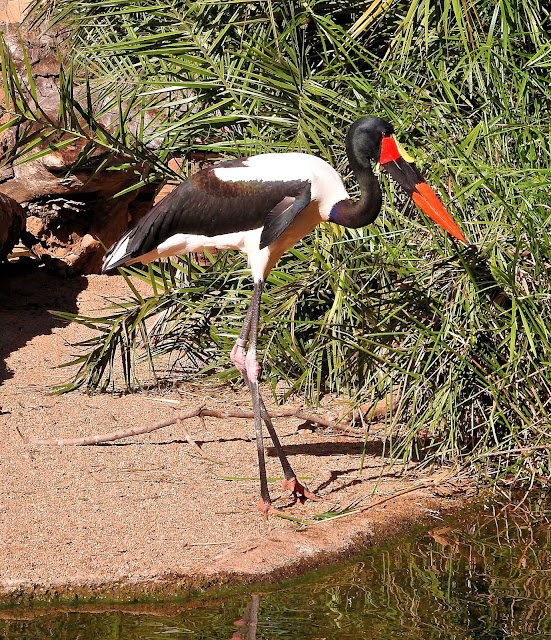They are often found alone or in pairs along riverbanks and are easily recognized by their long, brightly colored beaks. Their plumage is iridescent black with white primary flight feathers.
The male is larger and heavier than the female. Furthermore, males have brown eyes, while females have golden-yellow eyes.
They are silent except for the croaking they make with their beak to show excitement.
They do not form breeding colonies, but the pair build a large nest with branches and sticks in the top of a tree, which can reach 2 m in diameter and where the female lays between 1 and 5 eggs, generally 3 or 4, which will be incubated by both the father and the mother for approximately a month.
To avoid overheating, they pant vigorously and ruffle their sun-warmed outer feathers away from their bodies. Adults regularly fill their beaks with water to refresh their chicks or eggs. They even defecate on their feet, leaving them covered in white feces.





































%2022.jpg)
%2023.jpg)




%2010.jpg)
%2011.jpg)
%2012.jpg)
%2020.jpg)
%2021.jpg)
%2010.jpg)
%2011.jpg)
%2012.jpg)
%2014.jpg)